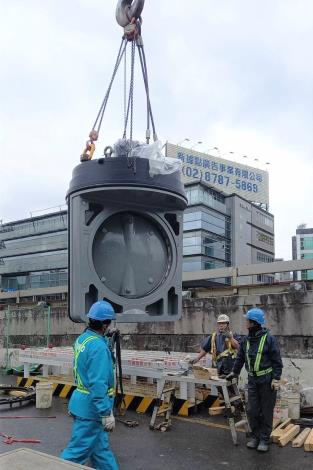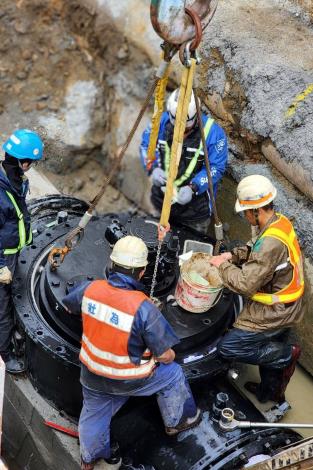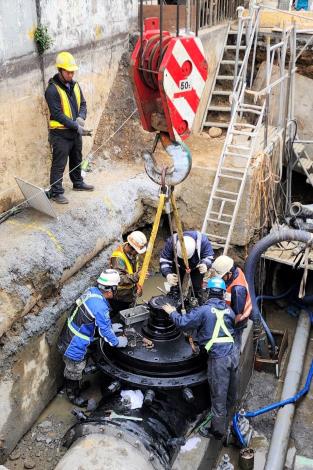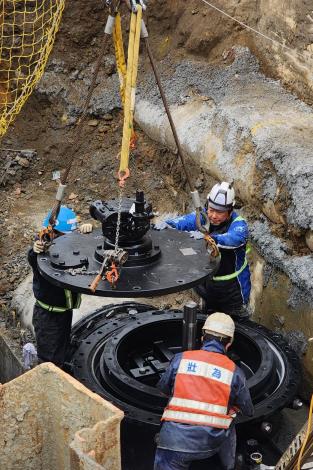Minquan Bridge Water Mains Disconnection and Relocation Creating a service-oriented municipal services with uninterrupted water supply technology
The water distribution mains pipeline attached to the Minquan Bridge by the Taipei Water Department (TWD) was relocated to accommodate the bridge’s reconstruction project and the TWD adopted the latest Japanese uninterrupted water supply technology to install additional butterfly valves to ensure 50,000 water users in the Neihu District can continue to have access to the water supply when the water mains are switched. The Taipei Water Department stated that the relocation of the 1,000mm water pipeline on the Minquan Bridge, which transports 65,000 metric tons of water daily from Songshan to Neihu, would have required at least 2 consecutive days of water outage per relocation if the general method was adopted, which would have seriously affected the water quality of 50,000 water users in Neihu. The TWD stressed that in order not to affect the construction progress of the reconstruction of the Minquan Bridge and to maintain the standards of water service for the public, the TWD completed the "Relocation of the Rainwater Drainage Construction of the Minquan Bridge and the Installation of Additional Butterfly Valves of ∮1000MM Uninterrupted Water Supply" on March 15, 2023, adopting the latest technology and techniques. The TWD will thus be able to regulate the water supply mains while ensuring the water supply for household and business use in Neihu to ensure minimum impact. Under the concept of a service-oriented government, the Taipei Water Department is committed to serving the public and thinking about how to improve the construction project from the customer's point of view. The adoption of the uninterrupted water supply method, although slightly more costly, can reduce the disturbance to the public's water supply. The Taipei Water Department has completed the construction of more than 20 mains in various key water transmission routes in Taipei City, gradually improving the development of the water supply network.





![Taiwan.gov.tw [ open a new window]](/images/egov.png)
